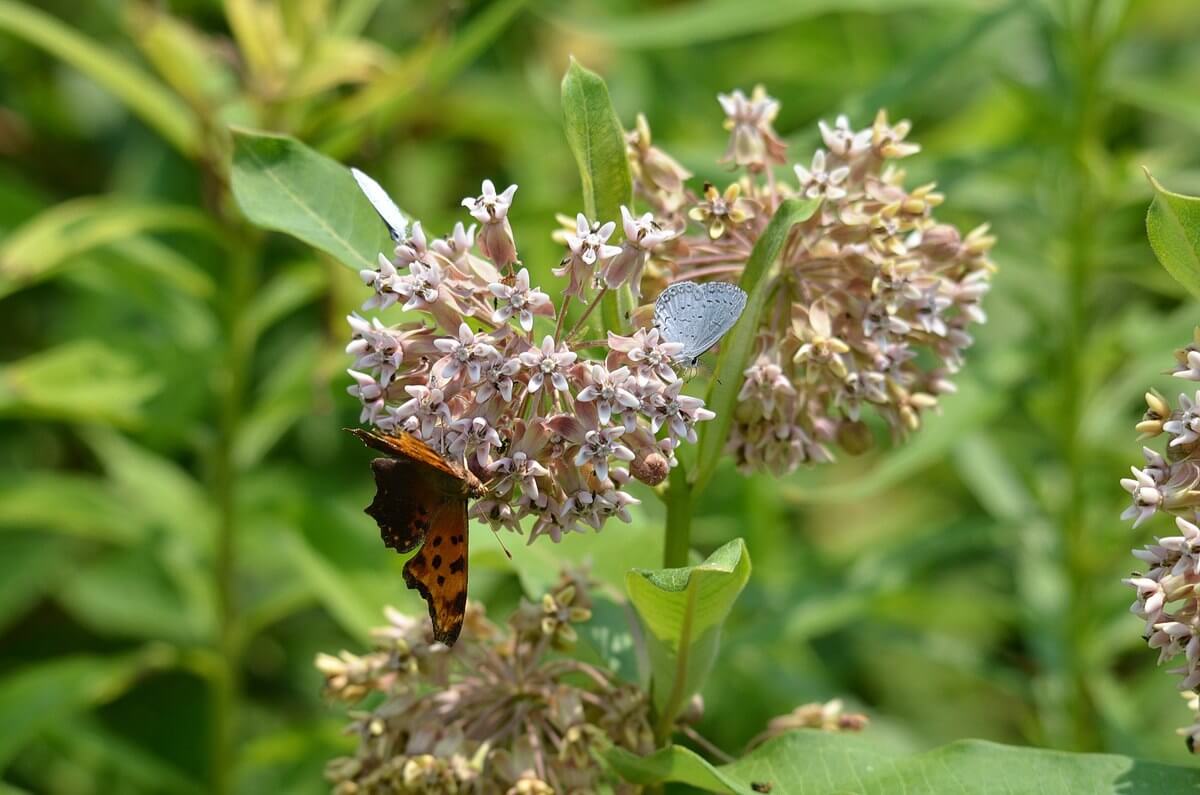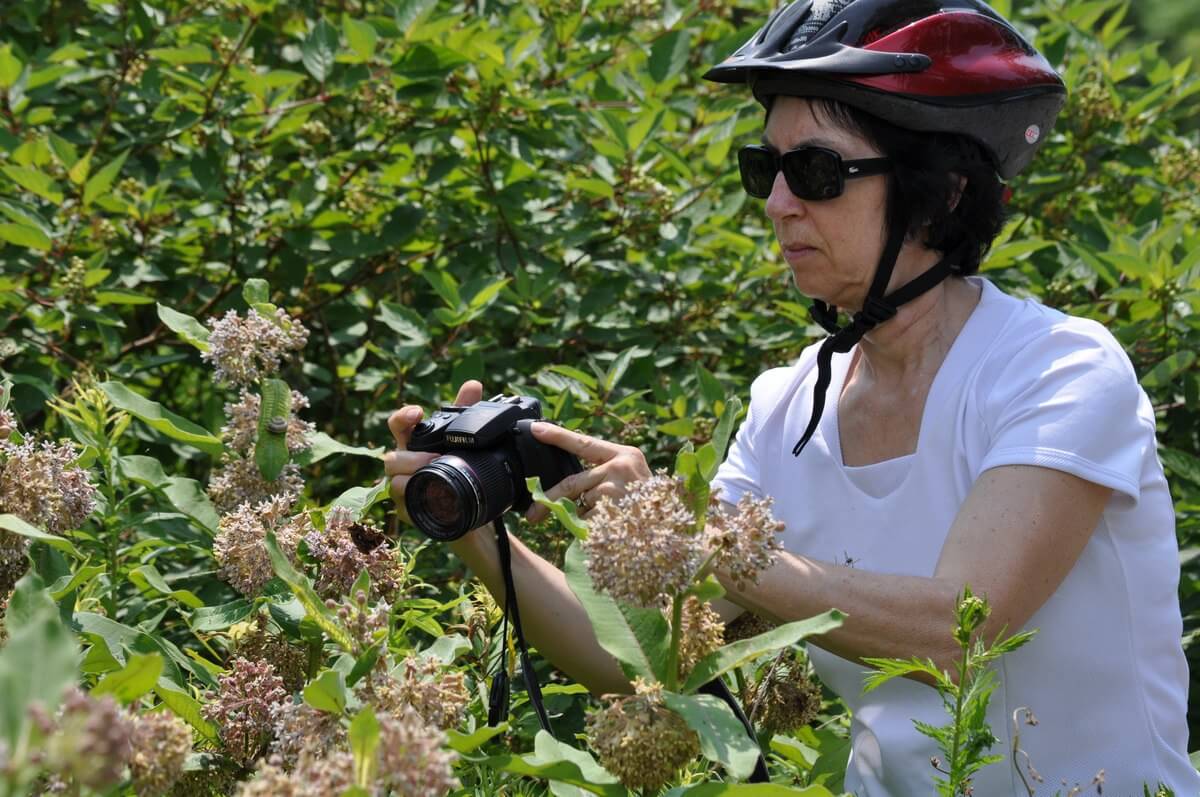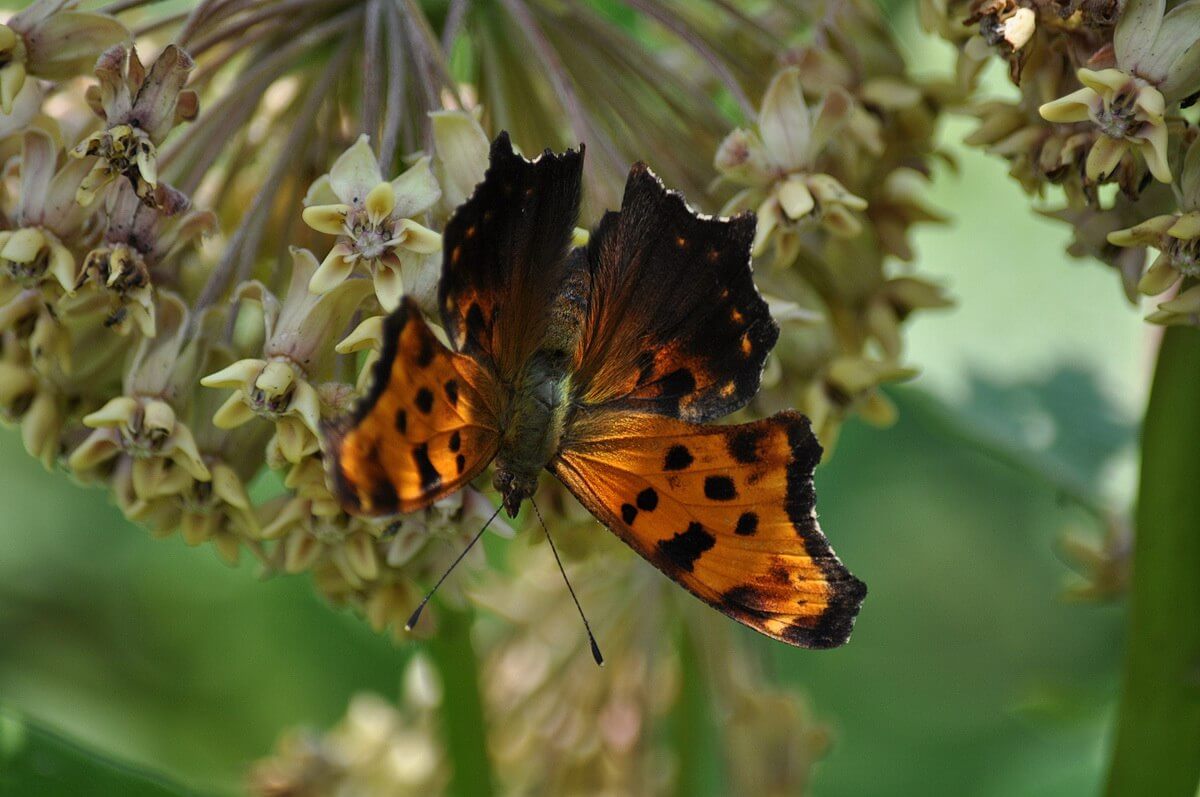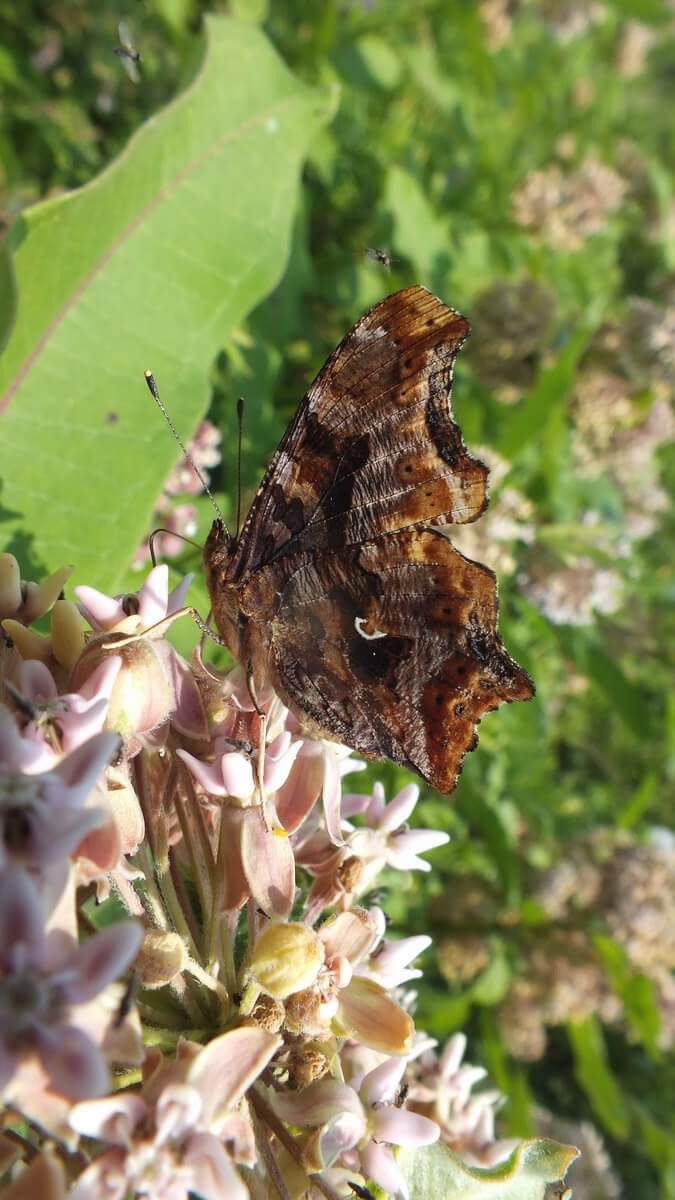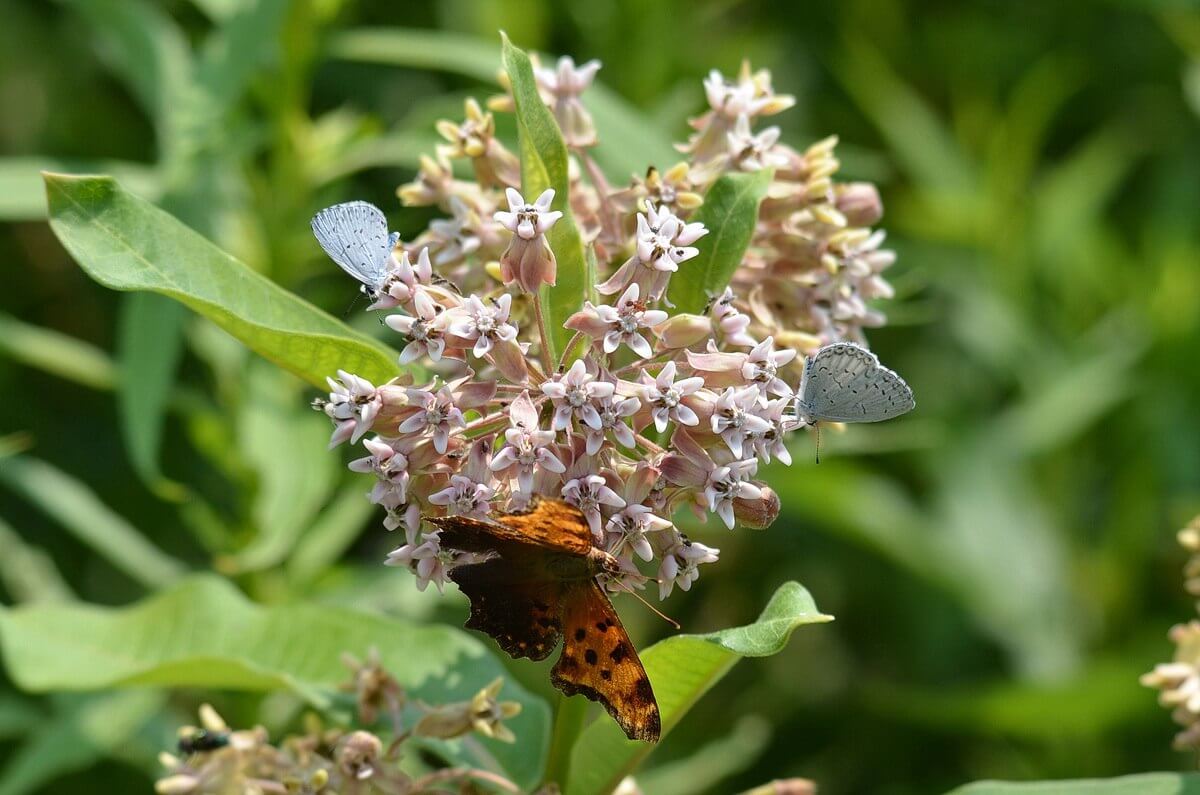Eastern Comma Butterfly At Tommy Thompson Park
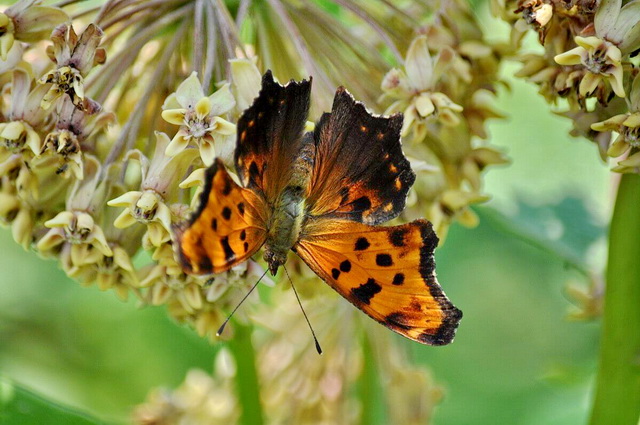
An Eastern Comma Butterfly was the icing on the cake for Bob’s and my bicycle tour around Tommy Thompson Park in Toronto, Ontario one Sunday. Eager to check out the construction of new cells along the eastern perimeter of the Leslie Street Spit, we had embarked on a day-long circuitous route around the man-made peninsula in the hopes of seeing some shorebirds in the dwindling amount of water in the huge holes.
We had already had success locating several Short-billed Dowitchers, had pulled up alongside Triangle Pond for our picnic lunch, toured around the lighthouse on the furthermost point, and crossed back towards Cell 2 via the footbridge all the while grateful for the soothing breeze that washed over our sun-drenched skin.
Bob and I were both scanning the wildflowers at the side of the multi-purpose trail in hopes of discovering some new species of butterfly. He had already picked out a Hickory Hairstreak earlier in the day. That is when my eye noticed an unusual rigid brown mass on one milkweed flower. I thought it was just a dried leaf, but hopped off my bike and went to inspect it more closely.
I never had seen an Eastern Comma Butterfly before but recognized the unfamiliar brown colour of the ventral surface of its wings. I immediately knew I was looking at a butterfly and one that was new to us. It was the white comma shape in the middle of the hindwings that clued me in to the fact that it was one of the anglewing brushfooted butterflies. My guess is that it was a male given the variety of mottled shades on this side of the wings.
Bob soon rallied to my side to gain a different perspective when photographing this striking butterfly, and he pointed out at least 4 others in the immediate vicinity. Eastern Comma Butterflies vary in their colouration by season. In the first photo shown above, the hind wings exhibit the paler/winter hues and are almost totally reddish-orange, whereas the hind wings of the butterfly seen above tend toward the darker/summer shades and are almost totally black.
I was intrigued by the shades of brown and black on the under sides of the wings, but it was the curved white “comma” mark that defined these butterflies as a new species for Bob and me. In each case, the “comma” that accounts for the species’ name is curved and hooked with slight enlargements at either end. Adding interest to the overall silhouette of each butterfly was the pronounced indentations along the margins of the wings giving them an almost ragged appearance.
If we had been familiar with the habits of Eastern Comma Butterflies, we would have realized that where we found them was in the perfect habitat: at the perimeter of a naturalized meadow that was adjacent to a moist woodland area. The availability of trees nearby guarantees a source of their favorite food, fresh sap oozing out onto the bark. Also, the proximity to the forest of trees provides a quick escape should any of the butterflies feel threatened or disturbed. All they need do is light on a limb, hold their leaf-shaped wings closed, and they are masterfully camouflaged.
It was unusual for these butterflies to be nectaring from Milkweed or any flower for that matter given that sap is highly preferred, but they do also consume juices from rotting fruit, or ingest salts and minerals while puddling on damp soil or dung.
We were very fortunate that a trio of Summer Azure Blue Butterflies insisted on sharing the same milkweed flowerheads as some of the Eastern Comma Butterflies. A couple of the Eastern Commas decided to seek a reprieve from the bright sunlight by slipping onto the shaded leaves of a nearby bush, but the remaining three were in no hurry to stop feeding.
We were thrilled with our nature viewings that day at Tommy Thompson Park, and to top it off, it seemed that few people were making use of the lakeside locale for recreational purposes. Maybe it was just that Bob and I had veered off the main conduit to the end of the Spit in favour of a dirt path that paralleled Spine Road. It suited us just fine.


